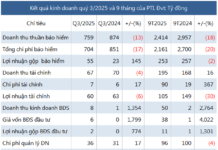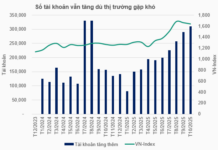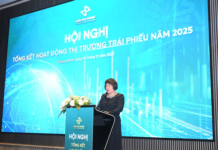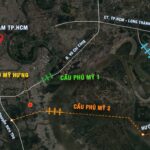
VinSpeed Railway Investment and Development Joint Stock Company has recently released an environmental impact assessment report for the Hanoi – Quang Ninh High-Speed Railway project.
The project spans approximately 120.4 km, starting at the National Exhibition and Convention Center (Co Loa) in Dong Anh District, Hanoi, and ending at Tuan Chau Forest Park in Quang Ninh Province.
The project’s scope covers 22 communes and wards across four provinces and cities: Hanoi, Bac Ninh, Hai Phong, and Quang Ninh.
Classified as a Group A project, it boasts a total investment of 152.219 trillion VND. The investment model follows a public-private partnership (PPP) approach.
The project involves constructing a new double-track passenger railway with a standard gauge of 1435mm and electrification. The main line is designed for speeds of up to 350 km/h, while the section passing through Hanoi is limited to 120 km/h. The entire route includes four stations (Co Loa, Gia Binh, Yen Tu, Ha Long) and one depot at Ha Long Station in Tuan Chau Ward, Quang Ninh Province.
Masterise Group Secures Ho Chi Minh City’s Approval to Develop 13-Trillion-VND Double-Deck Bridge Linked to Record-Breaking $16 Billion Project, Visited 8 Times by Prime Minister in 3 Years
Masterise Group has been entrusted by Ho Chi Minh City to spearhead the research and development of the Phu My 2 Bridge project, a 6.3-kilometer infrastructure initiative designed to connect Ho Chi Minh City with Long Thanh International Airport.
Billionaire Pham Nhat Vuong Merges VMI’s $700M Real Estate into VinSpeed; VMI Retains $76M in Assets
As VinSpeed finalized its merger with Hung Long Real Estate Management and Investment JSC (formerly known as VMI Real Estate Management and Investment JSC), another company bearing the old name, VMI Real Estate Management and Investment JSC, was concurrently established.
Exciting News for Hai Phong Residents: A $828 Million Road Project Connecting 9 Wards, 2 Urban Centers, and Multiple Industrial Zones is on the Horizon
The proposed route will seamlessly connect two major urban hubs—the central metropolis of Haiphong and the satellite city of former Hai Duong—serving a population of approximately 1.7 million. This development promises to significantly reduce travel time, enhancing connectivity and efficiency across the region.












































